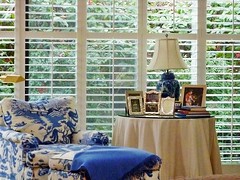Article by Interior Design London
Professional interior designers are expertly trained in the use of lighting features to create breathtaking results. In this four-part series which I call “Colour Me Brightly: Understanding Light in Interior Design,” I draw on my experience in London’s interior design community to explain this fascinating subject. This fourth article concludes my series.
Linear light patterns can focus on either the horizontal or the vertical metrics of a room. A given wall-light technique can create an immersing halo effect, if the interior designer uses concentrated super-bright light at high level that gradually fades out towards the base. Some London Interior Design consultancies specialise in choosing continuous sources, such as a miniature tungsten rack for a soft light or overlapping fluorescents for a cooler light. This is an effect that works very well in contemporary interior designs, where light can be concealed between the wall and the ceiling in a crevice in order to take the place of the traditional cornice.
The best method of illumination for interior designers to use when creating patterns will depend on the interior, and also on the direction of windows (natural light in London can be very seasonal). A smoothly plastered wall can jump into existence with a dappled arc wave from closed-offset down-lighters but if the interior design feature lies in the texture and in the structure or hue of the wall, then a more uniform spray of light will emphasise the wall’s best perspectives. A splashback tile solution at the rear of a shower or bath is a good interior design choice for the arc wave effect, as is a Venetian blind in a London kitchen. A wood-panelled hall or study is often a compelling interior design feature, and accordingly it would be better lit with an even light that does not detract from the feel of the wood.
Shifting from instant to instant and from a London dawn to a dappled full seasonal moonrise, the impacts of illumination and shadow are phenomena we almost disregard. But London’s top interior designers know that patterns of light can actually transform our emotions with respect to the interior forms that engulf us. By bringing to life walls, floors and ceilings with light-focused interior designs, pattern-making is yet another realm of illumination that can brighten our spaces and enhance our quality of life.
Related Interior Design Articles
Search
Category
Archives
-
▼
2011
(29)
-
▼
September
(13)
- Custom Home Design ? Important Floor Plan Consider...
- Design Alternatives Offers Home Building Suggestio...
- Apchin Design Corp Incorporates Supreme Luxury In ...
- How Apchin Design Corp. Works With Clients On Thei...
- Breathtaking Interior Designs Are Always the Goal
- Modular Home Design Options
- Colour Me Brightly! Understanding Light in Interio...
- Interior Design Company Interior Design Service, I...
- Feng Shui Home Design - Full Analysis of Your Home...
- Luxury Home Designs Created Uniquely For The Homeb...
- Interior Design Courses
- Interior Design Without Fulfill Your Requirement
- Interior Design
-
▼
September
(13)


0 Comments Received
Leave A Reply